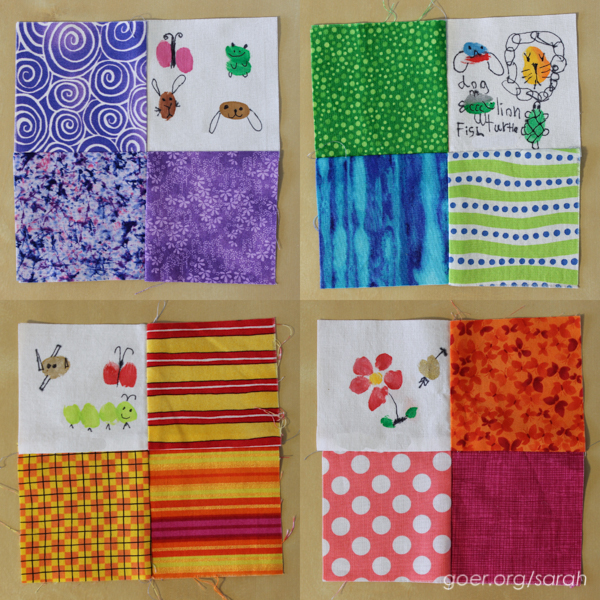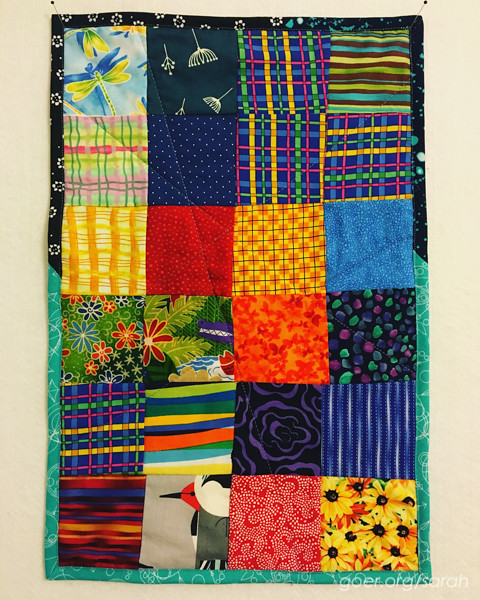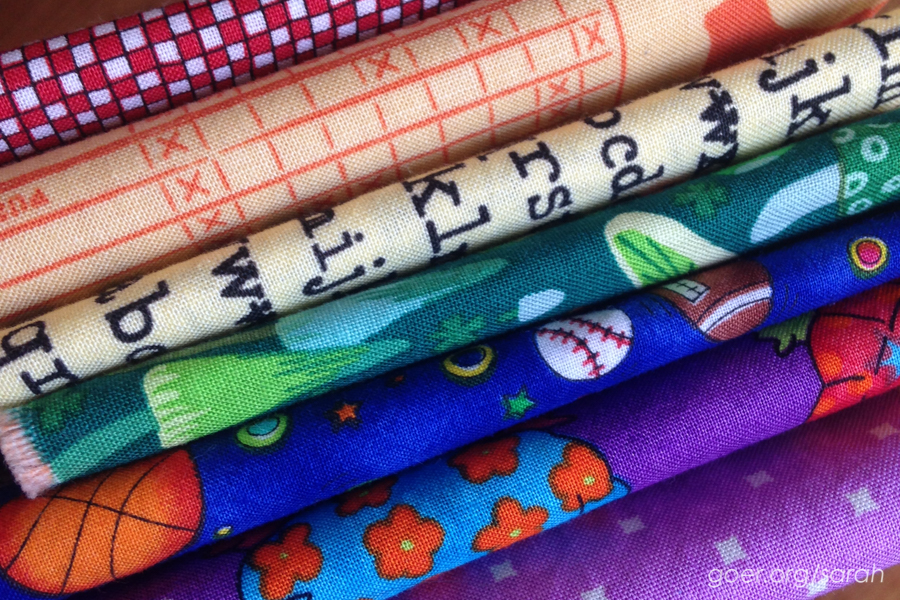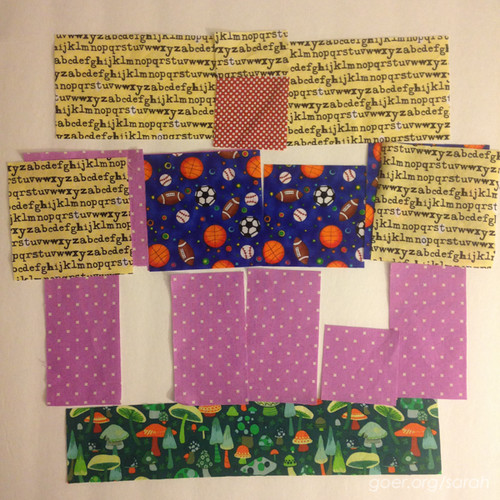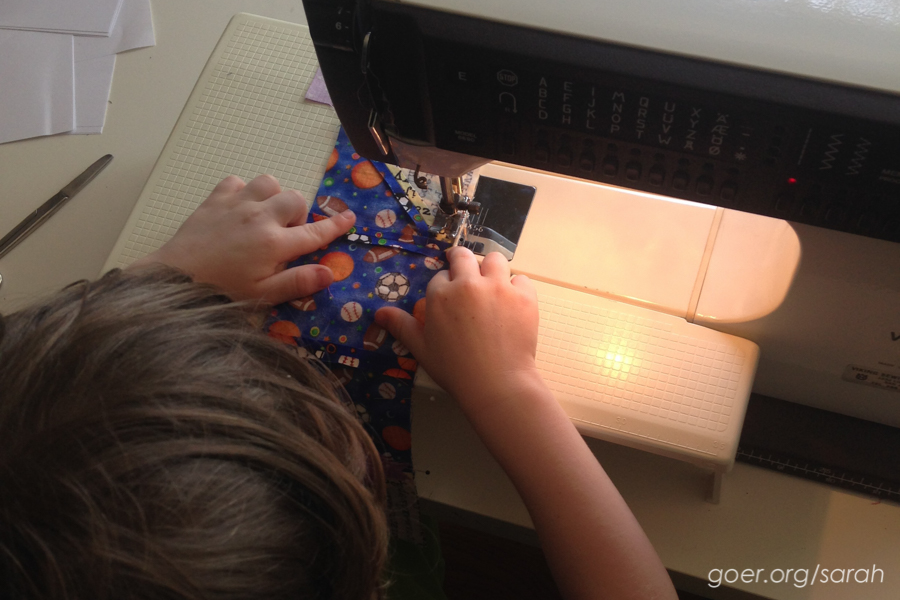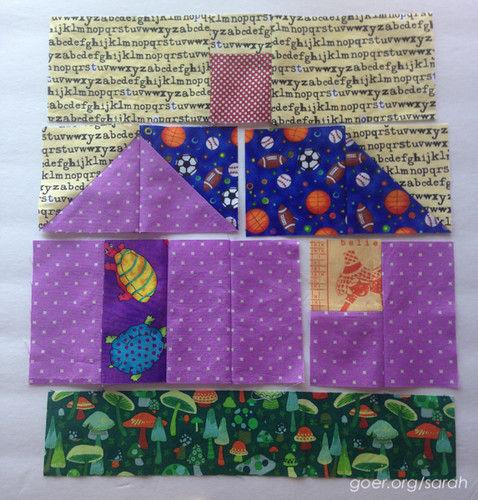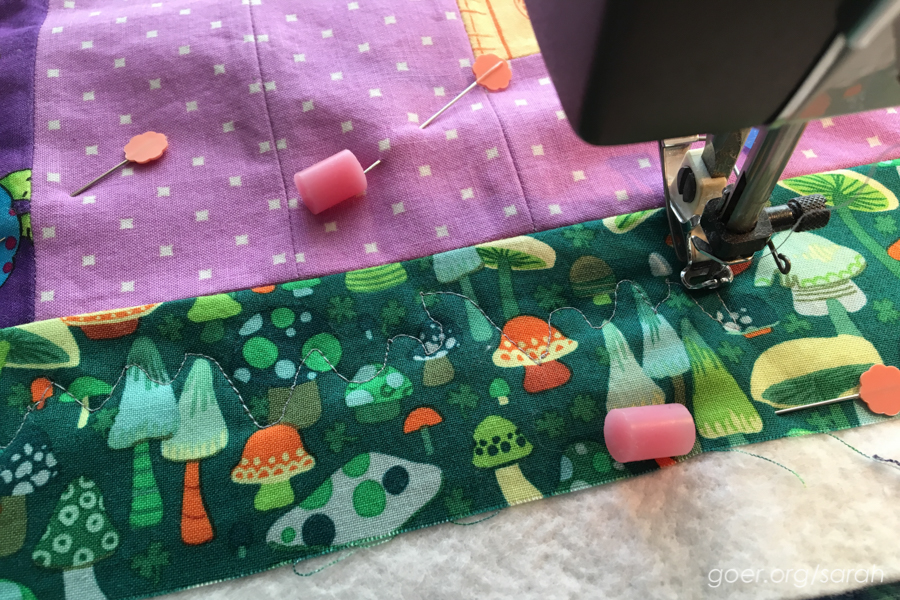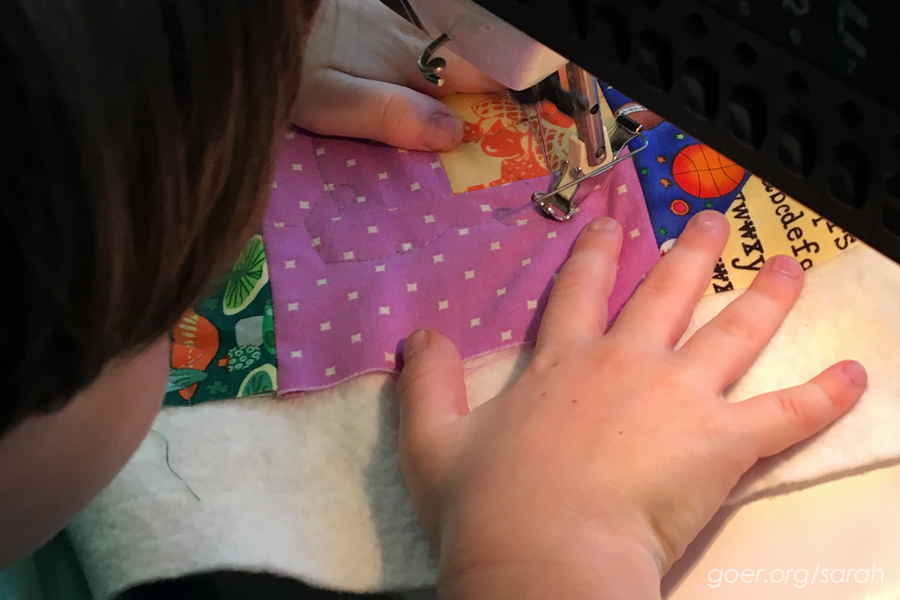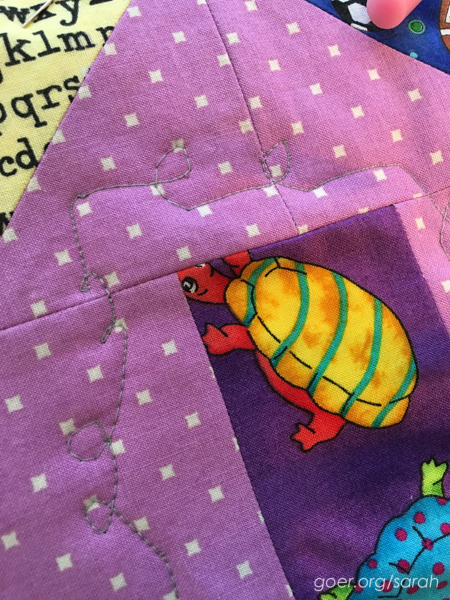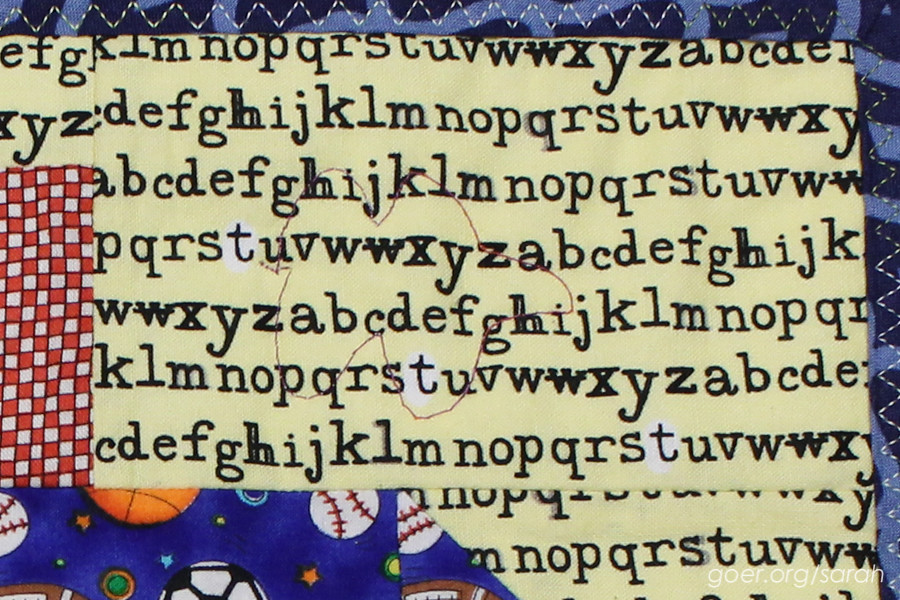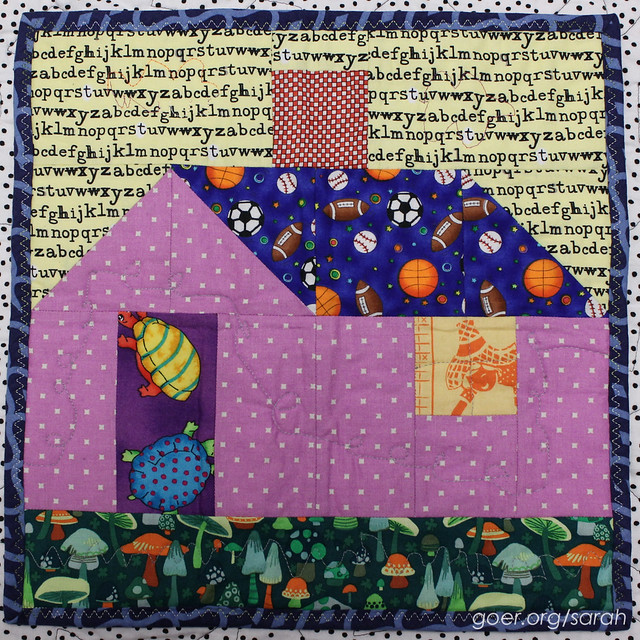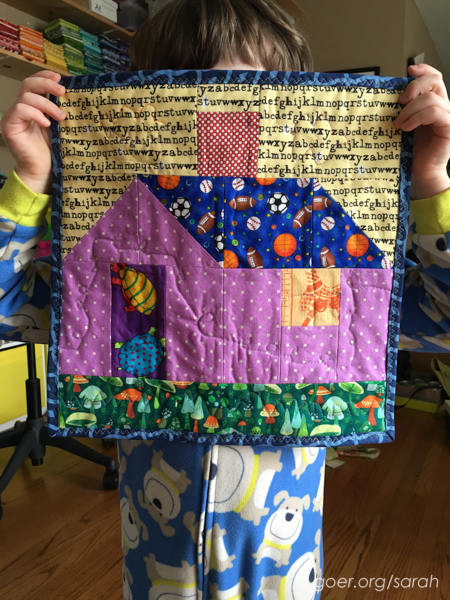My daughter turned four in May. She finished her first quilt last week and boy is she proud! She pulled the rainbow of fabrics from my stash (because she didn't have a stash at that point, a problem we've since rectified). The girl has an eye.

Now this may seem like a simple case of second child syndrome, since my son had a seven part series on his first quilt. In reality, she finished hers much more quickly than he did. Perhaps because I wasn't also chasing around a 2 year old while I was helping her sew. Additionally, we opted for a larger quilt with fewer pieces for her, so there was less piecing. (I totally owe you a "The Making of Rainbow Swift 2" post.)


The quilt is about 40" by 50", made up of 10" squares. Like my son, my daughter did all the piecing of her first project sitting on my lap at my machine. I pressed all the seams for her. And by the time we were on the quilting step she was itching and ready to sit at the "kids" machine (same model, on a kid sized table) to do the quilting by herself.

She still needed help with her walking foot quilting, particularly because she opted for curves when we brainstormed her options. I mostly managed the bulk of the quilt and reminded her when to stop and start to reposition her hands. She's great at stopping to take out the pins. Once she was done, I quilted her life-sized handprint onto the quilt. I love this fun little detail.


She hand wrote her quilt label. I love that she named the quilt Rainbow Swift 2. Rainbow Swift is the doll quilt my son made for her. The label is GIANT.
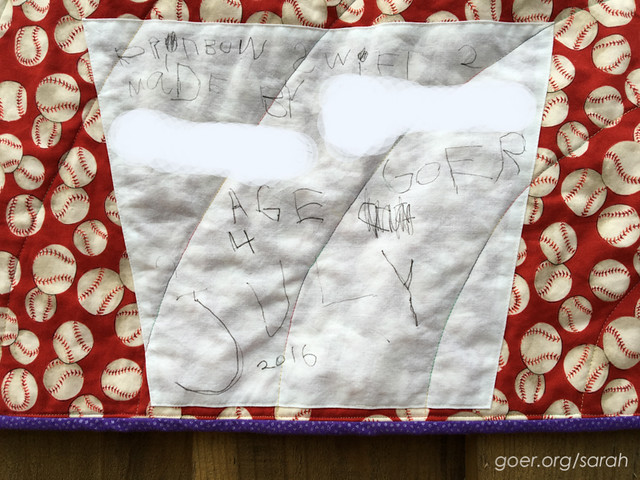

It was great fun to see her enthusiasm and pride in her work. I'm so happy that I can share my passion with my kids. We got it finished (I made and attached the binding) just in time for her to bring it along to my guild meeting last Monday for her first quilt show and tell. She's been sleeping under it every night since. And many morning she even makes her bed!

It's also great for hiding under and surprising people. ;-)


My son handed down a few months ago when he declared, "I'm not in training anymore."

An Interview with the New Quilter
Tell me the process of making a quilt.
Sew them together. Sew the squares together and then you sew the sandwich together. But first you put pins and pinmoors in.
How did you decide on the name “Rainbow Swift 2”?
I already had Rainbow Swift and I liked the name.
How was it to be taught by your mom?
I liked it. Because [my brother] got to sew and I didn’t. (I think this amounts to “it was about time she taught me.”)
What did you like best about making a quilt?
I like that it is big and it can almost fit my bed.
What about the process of making it?
Sewing it like a rainbow. It looks real like a rainbow because the stitches go curving. [Admires her work.] And it’s rainbow thread. And there’s rainbow raindrops on the back and kind of rainbow curly fabric.
What is your favorite part of quilting?
My favorite part of quilting is sewing the stuff together.
What was the hardest part?
The hardest part was curving it [while quilting] because I had to press harder with this hand to make it curve that way.
What’s the most important thing to know to make a quilt?
To know not to go too fast and take out pins when you need to.
What would you tell a new quilter?
To do that same thing.
Will you submit your quilt to the next SCVQA quilt show?
Yes.
What are your plans for “Rainbow Swift 2“ now that it is done?
To cuddle with it and sleep with it.
What are you planning for your next quilt project?
To make a kitty quilt. And there’s stripes on the front. (sneak peak in my last post)
Is there anything else you’d like to add?
Yes. I like sewing and I wish I could sew every day like Mom.
Thanks for visiting!
I'm linking up to Needle and Thread Thursday, TGIFF and Finish it Friday, as well as the Q3 Finish Along finishes party. See all my Q3 WIPs in my goal post.





 At this point I worked with kids in smaller groups (4-6 at a time) to get them started on their stitching. We determined that it was easiest for the kids to have their squares pinned together and to have a line drawn to stitch on. (Some preferred lines on both fabrics, front and back.) Oh, they also like their thread tied onto their needle, so the needle doesn't easily slip off when they pull too far. One class seemed to be a little more self-motivated than the other. I ended up checking in with them regularly, but most made progress when I wasn’t in the classroom. The other class had some more reluctant sewers, so I spent small amounts of time many times a week with them. Some were willing to take only 6 stitches each time I visited. Eventually, everyone finished their 4-patches. Here are a few.
At this point I worked with kids in smaller groups (4-6 at a time) to get them started on their stitching. We determined that it was easiest for the kids to have their squares pinned together and to have a line drawn to stitch on. (Some preferred lines on both fabrics, front and back.) Oh, they also like their thread tied onto their needle, so the needle doesn't easily slip off when they pull too far. One class seemed to be a little more self-motivated than the other. I ended up checking in with them regularly, but most made progress when I wasn’t in the classroom. The other class had some more reluctant sewers, so I spent small amounts of time many times a week with them. Some were willing to take only 6 stitches each time I visited. Eventually, everyone finished their 4-patches. Here are a few.